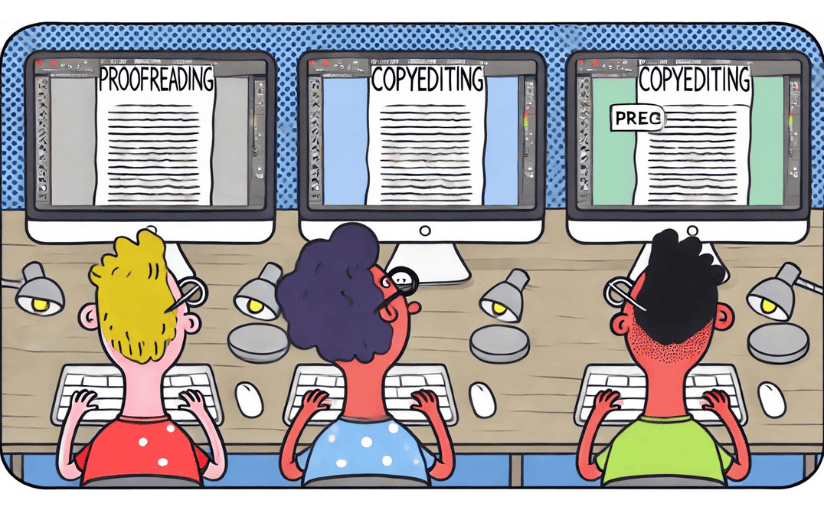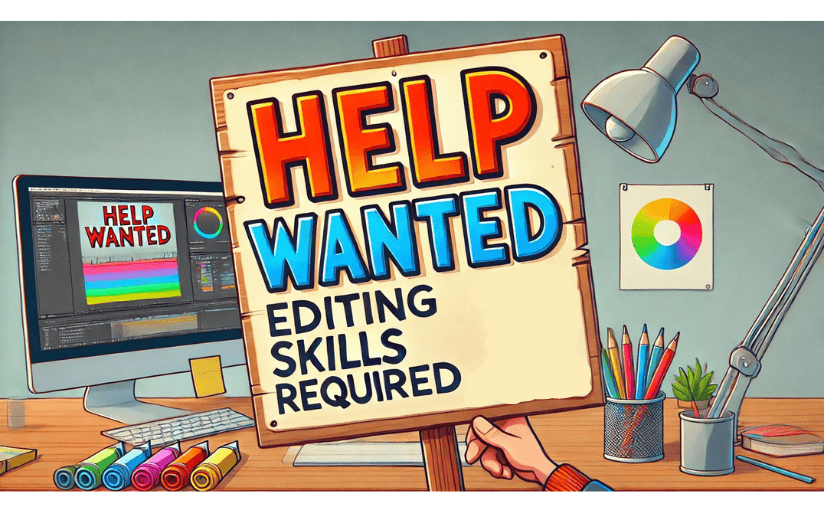If you’ve just finished writing your article, blog post or book and are looking to publish it right away – stop. Take a step back and consider this: Has your document gone through any sort of editing process by someone other than you? If not, you should seriously consider hiring an editor. There are many different types of editing, and you can use them to improve the quality and readability of any content you write.
Even businesses can benefit from using an editor to improve their SEO content. An editor can spot ways to cut out the fluff and improve the flow of the writing, which can boost the quality of content and improve search rankings. As well as in publishing and online posting, editing has a crucial role in any content marketing strategy.
Why Is Editing Important?
I may write and edit articles for a living, but that doesn’t mean I trust myself to catch every mistake in something that I wrote, especially if I proofread at the last minute. I need a fresh pair of eyes familiar with different types of editing for that.
Editing helps you create the best version of your content possible. The perspective and expertise of a content editor are invaluable, especially if you are planning on showing your content to a lot of people. The extra work before publishing can save you from public embarrassment, but more importantly, it enhances what you have already written. Whatever type of editing you choose, it’s a win-win situation.

The Different Types of Editing
Before you start looking for an editor, you should first figure out what type of content editing service you require. You can find many freelance editors and content editing services on the internet, but you need to make sure the one you choose can really meet your needs. What is the editing process you are looking for? Consider many of the common types of editing necessary these days:
1. Tables, Legends, and Other Media
Some types of editors will look over the data in your articles, such as graphs, legends and tables. Other editors may look at images and, sometimes, videos. This type of media content editor may help you to decide the best way to present your visual content. They can also help to fact-check some of your data and statistics to make sure they are relevant and add to the flow of the content.
There are many different types of editing in media, so this is a broad segment. However, as media use on websites and blog posts continues to increase, a media content editor is an asset.
2. Citations
Many journalistic articles and academic publications require extensive bibliographies or literature citations. This is when reference editing, fact-checking or citation editing can be useful, especially if your article must follow a specific citation format. If you’re blogging for business, you should also make sure your citations are correct and conform to company or brand style guides.
3. Indexing
Indexing editors look through a piece of content and create an index of names, places, or other important information using special indexing software. This is useful for companies that need to easily access information on a specific topic or file. This type of editing is slightly different than creating citations. It is useful for preparing reference materials for publication.
4. Formatting
Every publication has strict rules regarding the formatting of its articles or stories. You may need format editing to ensure your article or e-book will meet the requirements of your desired publisher. This type of editing looks at fonts, line and paragraph spacing, use of bullet points and headings and overall structure.
Formatting editors are familiar with specific formats, such as the Associated Press style, and they will check to see if you are following all the rules. Web content often requires headers, meta descriptions and keywords that this type of editor can check and correct too.
5. Review
A review editor should note both the pros and cons of your content. Review editing is useful to point out issues in your work, such as when something doesn’t quite make sense, is incomplete, is ambiguous or is otherwise problematic. This type of edit can be particularly useful for looking over a publication that will be subject to a peer review or for a manuscript being pitched to a publisher. It is also known as evaluation editing.
This type of editing can help to improve your writing or those writing for you (such as a freelance writer or content writing service). If you have consistent projects with the same writers completing the assignments, review editing can be a valuable tool.

6. Proofreading
Of the many editing services available, proofreading is the most basic there is. A proofreader will look over your work and fix issues with grammar, punctuation, capitalization, spelling and word use.
While there are many automated spell-checkers out there, they don’t catch everything. A proofread ensures that your content writing at least meets all of the basic eye tests, so readers aren’t immediately put off by blatant spelling and grammar errors.
7. Developmental
Also known as substantive editing, developmental editing is one of the most time-consuming. The editor looks over the book or article to make changes to organization and structure. With fiction writing, there may be major changes to characterization and plot. When you need someone to seriously scrutinize your work and help adjust it, you need substantive editing.
8. Copyediting
Copyediting can include a close look at the content of a piece, such as coherence and subject matter. Copyeditors also tend to carefully go over grammar, word use and punctuation. This type of editing is particularly useful for articles in news publications or blogs. Most content editing services provide a form of editing in this realm, since it can be a huge help to businesses creating content marketing copy but don’t have the bandwidth or skillset to go through each piece themselves.
9. Project
Project editing can take on many different meanings depending on what you need to be edited. You can find editors who will look over your timeline or schedule for project completion and make adjustments.
10. Stylistic
If you are ghostwriting or need to make sure your writing matches a specific style, then stylistic editing may be necessary. Stylistic editors can examine the reference material and compare how your style matches the original. This type of editing may be necessary if you are looking to pitch an article to an existing publication with strict style and voice requirements.
This type of editing is also very helpful when trying to ghostwrite and mimic the voice of a personality, executive or brand that has an extensive amount of content previously written. Often, companies offer a style guide that can be used by both the writer and editor.
11. Structural
Structural editing is similar to developmental or substantive editing. This type of editing examines the structure of a written piece – such as the plot and content flow. Structural editing can also encompass stylistic and copyediting. It is one of the more comprehensive forms of editing and is especially useful for novels or articles being submitted to a journal or for peer review.
How To Improve Your Editing Skills
Along with a content editor’s help, you may want to master a few editing tricks as you write. Self-editing can greatly improve your first draft.
You may still want to hire an editor, but at least you’ll have the basic grammar issues covered. Here are a couple of ideas:
- Get a grammar checker. There are many free applications out there that can catch easy mistakes and help you proofread as you go. There are different types of editing depending on the application you choose.
- Brush up on confusing concepts. If you’ve never mastered the use of commas, do some extra research to minimize mistakes.
Grammar and spelling are important, but so are the organization and appeal of your writing. Web writers and other professional writers must focus on the structure of their writing to incorporate marketing strategy. And even then, the article must be engaging to be effective. Here are a few tips to ensure the readability of your content:

Keep the Audience in Mind
Writers have the power to influence readers and inspire them. Whether you are writing a persuasive paper for college or an article for your website, you need to know who your target market is. The needs and wants of your audience can help you effectively choose topics and perspectives they will understand.
A structural editor or a similar type of content editor can help you more effectively target the audience you are looking for, such as tweak your word choice or develop the main ideas of your content.
Be Concise
Although novels and poems have more freedom of words and descriptions, being concise is a great skill to pick up for any style of writing. Use clear words and cut out the fluff. For online content, this is a must to keep the attention of your readers. They want information, but they won’t stay long if they have to read through lengthy, flowery sentences that don’t offer anything useful.
Read Out Loud
Reading out loud may be one of the best proofreading tips out there. It helps you catch silly grammar mistakes, awkward phrasing and helps you get a feel for the flow and tone of your work. During your proofreading, get a different perspective by reading out loud.
Take a Break
After staring at a Word document for too long, it’s easy to overlook mistakes or miss awkward phrasing. Get a breath of fresh air, do something different or take a nice break before coming back to what you have written.
Using these tips can improve the overall readability and flow of your content. Remember, not all types of editing are strictly grammar-related. Take note of the things you struggle with while writing. Whether it’s the structure, format or spelling, you can improve your own writing skills.
Different Kinds of Editing for Every Need
Editing encompasses so many different avenues these days that you can usually find a professional editor or content editing service to meet your needs. On top of that, with so much content being put out on the web every day the need for editing has never been greater!
Even if you have an extensive copywriter portfolio and consider yourself a grammar whiz, it’s beneficial to have professional editing services look over any text before it goes live or is published.
What other types of editing are relevant to modern writers? Which type of editing has benefited you the most? Let me know your thoughts in the comments!


Leave a Reply